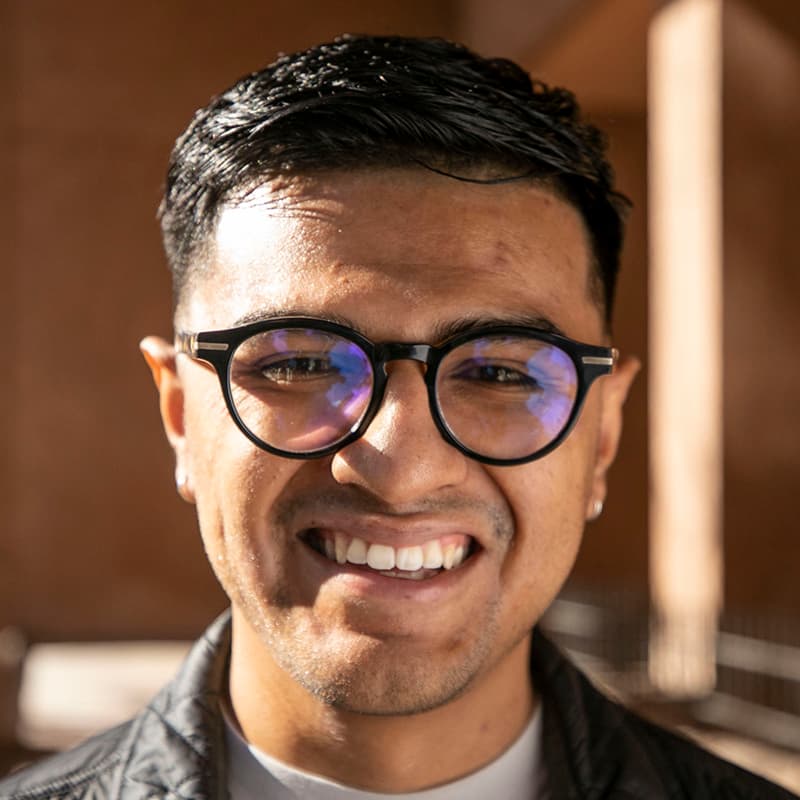Leo Tanguma is dressed in a five-button cardigan, denim jeans and the translucent shells of slender hearing aids as the famous Chicano muralist gingerly steps around his latest work.
Measuring 20 feet long and 12 feet high, the new mural depicts (some of) what it means to be Latino at northwest Denver’s Ricardo Flores Magón Academy (RFMA).
Tanguma has spent the past year developing his latest creation with the help of elementary schoolers, college students and other young adult helpers.

“I only paint 4 to 5 hours a day, but I should paint more,” Tanguma said.
“It’s hard on your knees,” Tanguma’s wife Jeanne interjects. “You’re 82.”
Like any detailed muralist, Tanguma expects to spend another three months before he’s finished. But the school is anticipating a dedication ceremony sometime in the fall.
How did a Leo Tanguma mural get on track for a school?
Connections through Metro State University’s Journey Through Our Heritage (or JTOH) program were instrumental in getting Tanguma into the school building.
Sponsored by MSU’s Department of Chicano/Chicana Studies and Department of Africana Studies, the program partners college peer mentors with local middle school and high school communities.
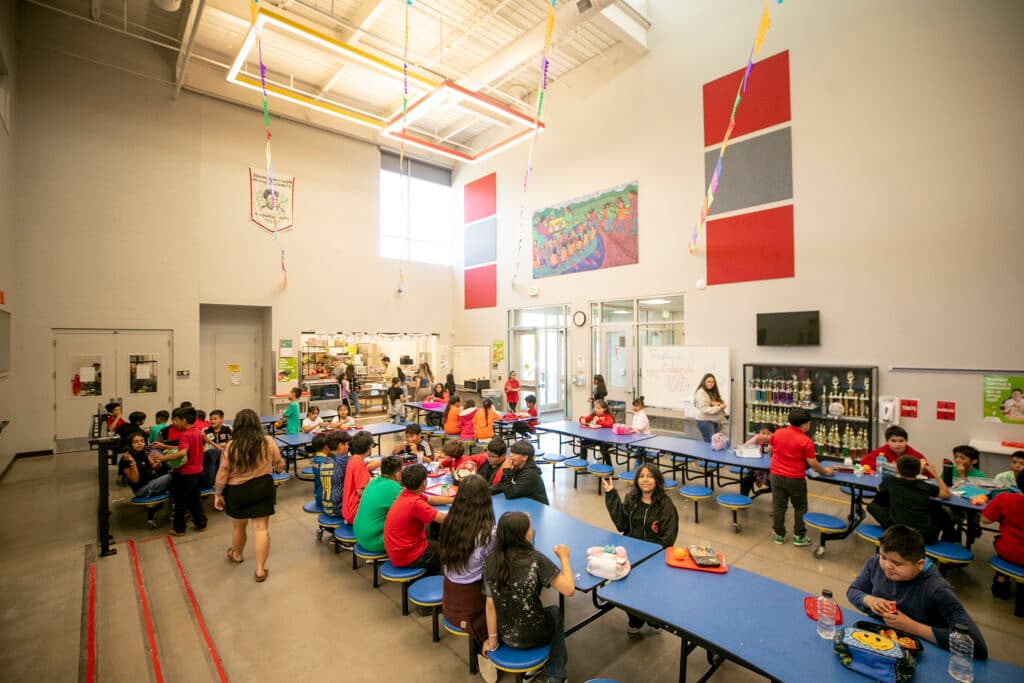
“JTOH gave me that opportunity to realize that I shouldn’t stay quiet with who I am and have pride as a Latina in the United States,” said Erika Guardado Lara, president of JTOH and a social work student.
The program is meant to help students learn and appreciate where they come from, Lara said. One method is connecting artists like Tanguma and poet Norma Johnson with school communities like RFMA.
“[Tanguma] is just one of us now,” said Marc Lytle, the dean of culture at RFMA. “All the kids greet him in the morning when he comes in.”
A labor of love for a school that is serving many new immigrant kids
Lytle introduced the idea of Tanguma painting a mural for the school, which is named after the intellectual precursor of the Mexican Revolution, during parent-teacher conferences.
The partnership was received with overwhelming support, leading to a long collaborative journey to create the best depiction of Latinidad at RFMA.
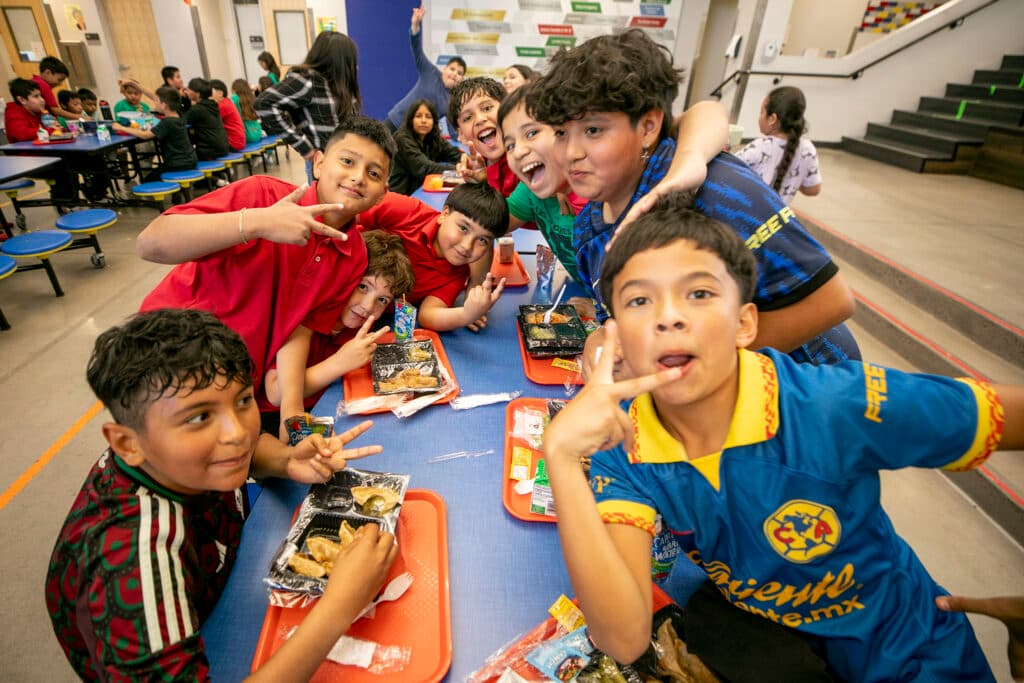
“It’s very clearly something that is a labor of love,” Lytle said. “He’ll be in here on Saturdays working … Once [the mural] is up it’s going to be a gigantic validation of who [the kids] are and their right to exist in this world.”
The school has gone through changes recently. In the opening months of the calendar year, the makeup of RFMA's student population which is Venezuelan newcomers went from zero to about 10 percent.
That inspired new iterations of the mural which further encompass the present colors of the student body.
“He just has this power of making you feel like you’re heard,” Lara said. “It’s important to let our young kids know that where they’re from matters.”
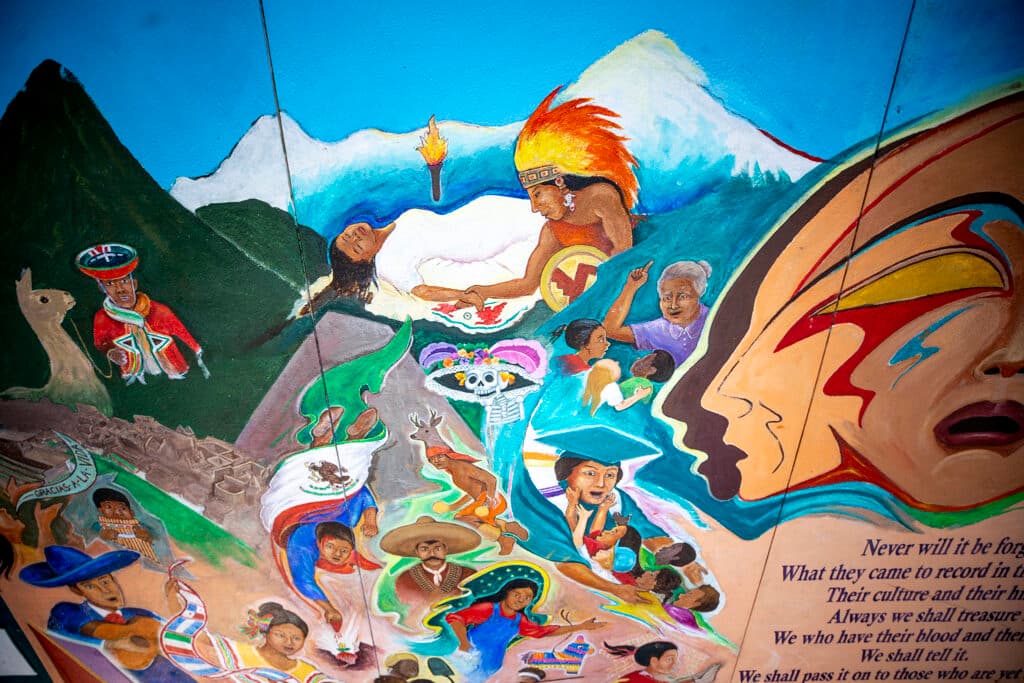
A closer look at the mural
The mural is trademark Tanguma.
It’s a collage of intergenerational souls that curve towards the mural's center, like looking into a cosmic dream.
At first glance, the mural is historical like the stories on stained glass cathedrals. Think images of the San Luis Valley, Southwestern pottery, Mexican-American soldiers in the U.S. Civil War, Mesa Verde, corn, Machu Picchu, maracas, wildflowers and so on.
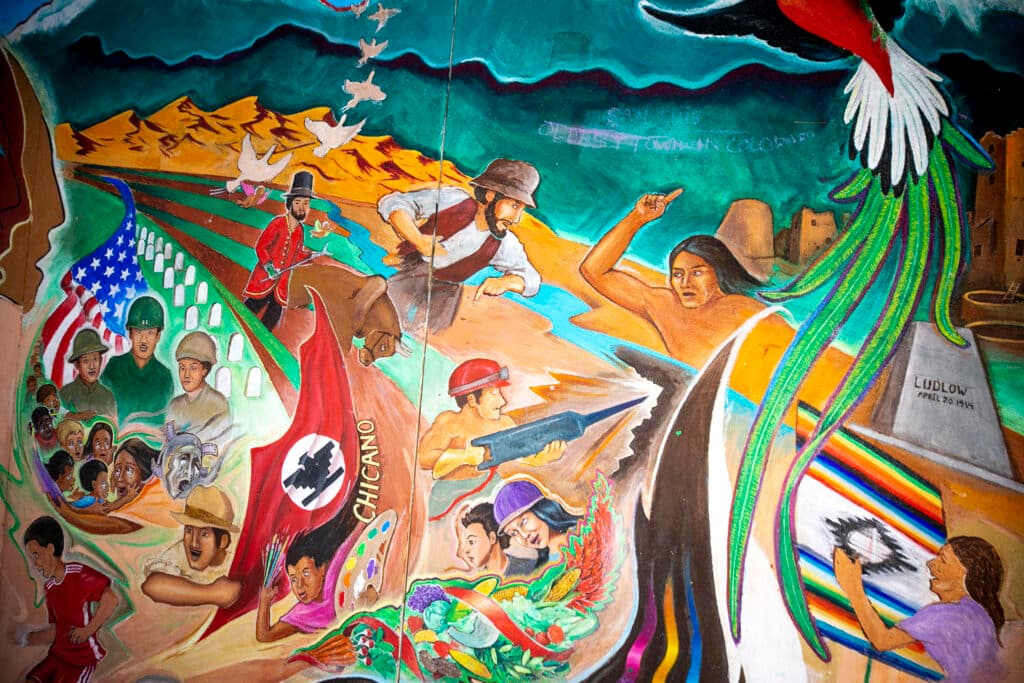
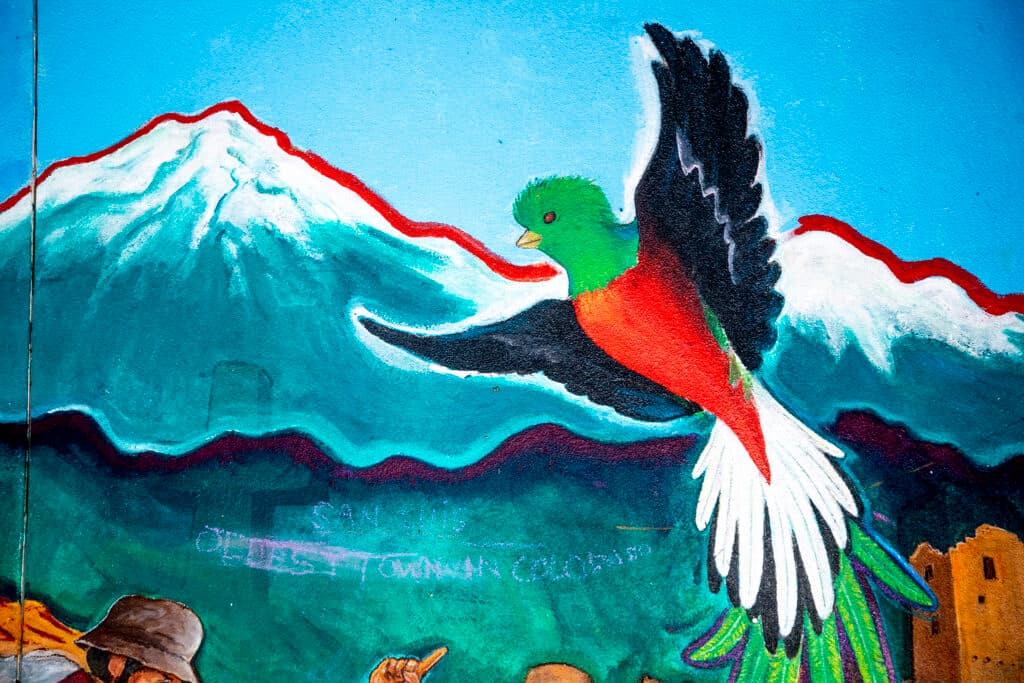
A second longer, the mural expresses alternate possibilities. Like Our Lady Guadalupe depicted as a teenager in overalls, or a new ending for the Mexican folklore character La Llorona (a vengeful ghost mourning the loss of her children) where she’s anything but sad.
“In my case, I paint her finding her children,” Tanguma said. “It’s amazing how well that idea was accepted. A couple of times I saw kids with tears in their eyes.”
At the center is what Tanguma calls the Cosmic or Universal Mestizo, inspired by the 1974 image by Amado Peña Jr. In Tanguma’s interpretation, a larger mix of profile colors better encompasses everyone’s individual walk with their Latinidad.
“These are all ideas to be explained to the kids,” Tanguma said. “For them to be inspired by different images.”
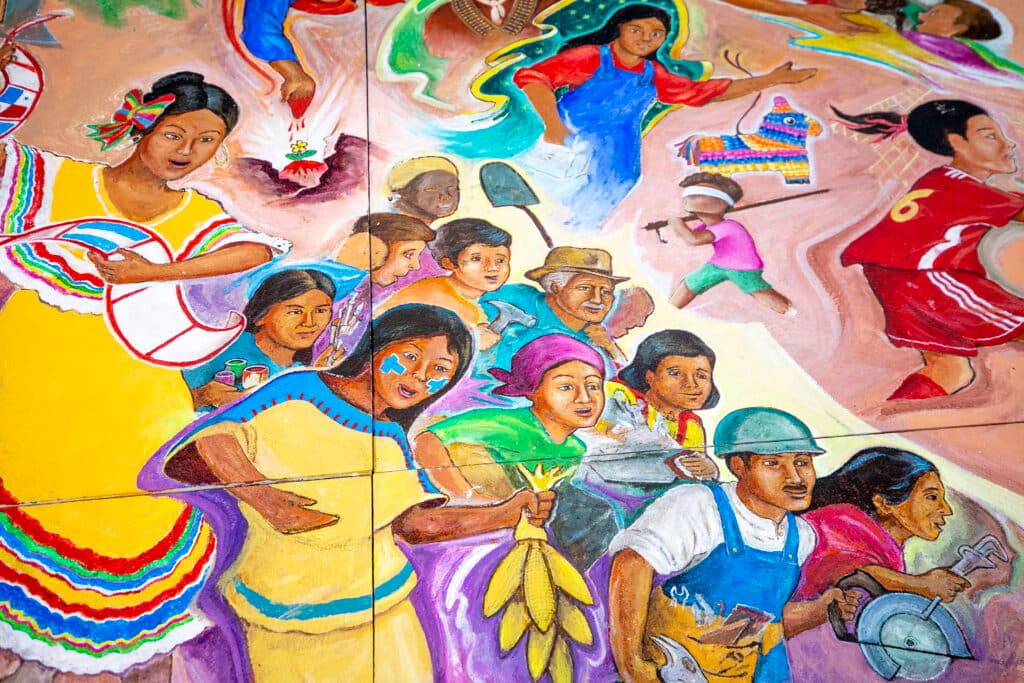
Collaborating with kids has helped Tanguma make a 'masterpiece' with a 'kind of innocence'
Students have been involved every step of the way, some helping Tanguma paint during lunch breaks and others offering ideas to incorporate their passions like soccer and dance.
“He’s looking at the whole diaspora of what it means to be Latino,” said Dr. Renee Fajardo, director of JTOH. “I think this is probably his masterpiece.”
Tanguma has long painted murals that comment on the unforgiving and unjust nature of our world, a theme inspired by his very first mural.

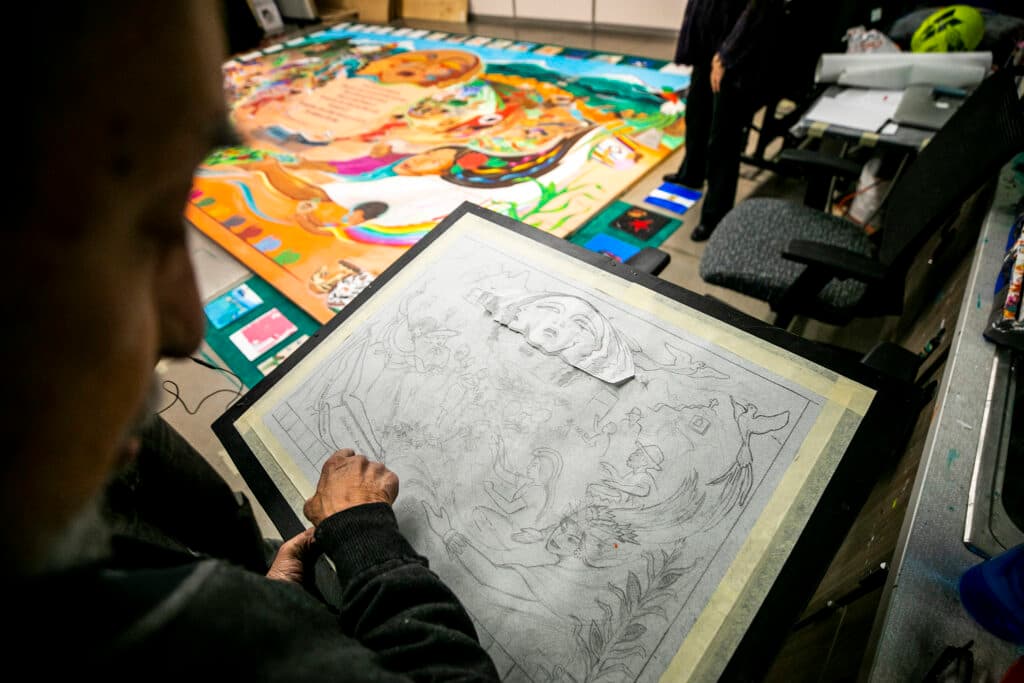
However, painting in a school building has created a “kind of innocence” to his finished piece.
Lytle said the school has embraced both Tanguma and Jeanne as almost “honorific” grandparents. Students were excited to spend time with them, learning, discussing and painting the stories of who they are.
“You offer [the kids] something like painting and they offer you something in return,” Tanguma said. “Their thoughts, the best of their lives and the worst of their lives…It’s one of the most meaningful murals, I think, I’ve ever done,” Tanguma said.

